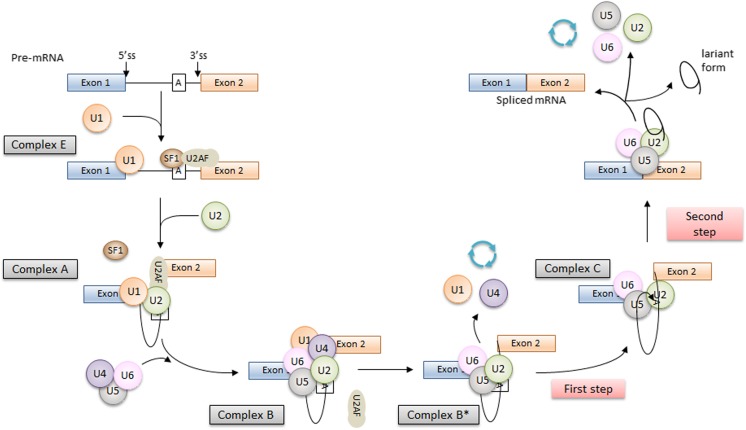Fig. 2.
The scheme of the splicing process. The splicing process is performed in two steps. The first step is the recognition of the splicing sites at intron/exon junctions, and the second one is the intron removal and exon ends joining. During the splicing process, four complexes between the pre-mRNA and spliceosome are formed. The first one is the early complex (E). The U1 snRNP recognizes and binds to the complementary AG-GU sequence at the donor splice site (5′ end of the intron). In the same time, the SF1 protein binds to the branch point. The SF1 is recognized and bound by the U2AF65 protein that also binds to the polypyrimidine sequence located between the branch point and 3′ end of the intron. Then, the SF1 is displaced from the branch point by the U2 snRNP, and the ATP-dependent (A) complex is formed. The interaction between the branch point and the U2snRNP protein is stabilized by specific RNA helicases (Prp5 and Sub2), and this is a signal for the recruitment of U4/5/6 tri-snRNP and formation of the B complex (pre-catalytic spliceosome). Further action of additional RNA helicases leads to change of spliceosome conformation that leads to the release of U1 and U4 snRNPs, the interaction between U6 with U2 snRNP, and the formation of a pre-mRNA loop and the C complex. In this complex, two transesterification reactions take place, intron is removed, and ends of exon are joined (Fredericks et al. 2015; Tazi et al. 2009)

